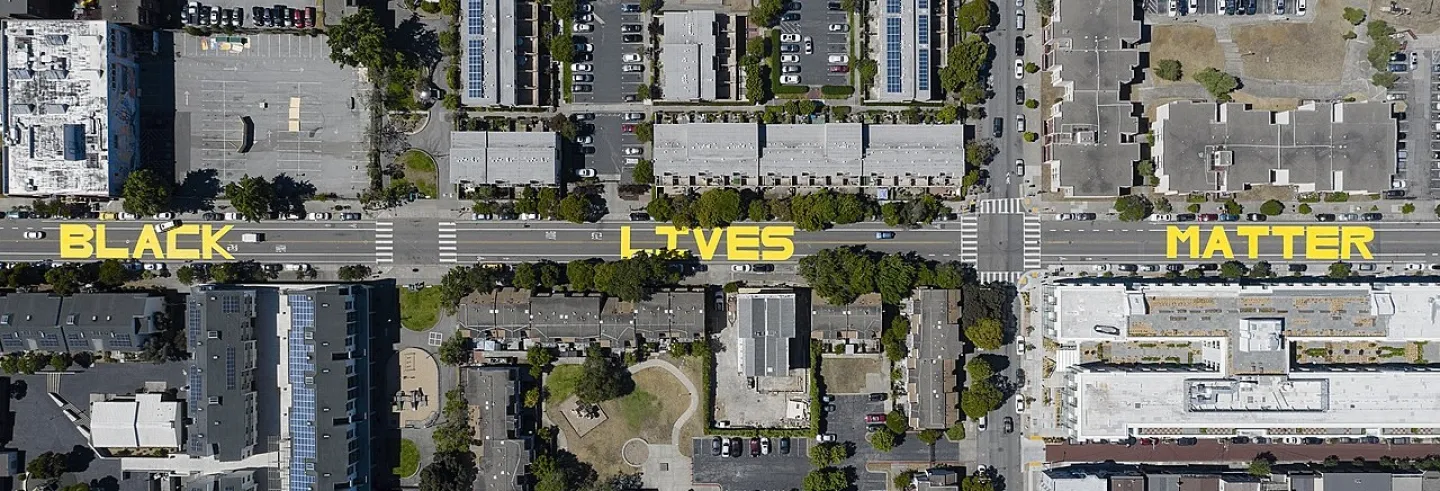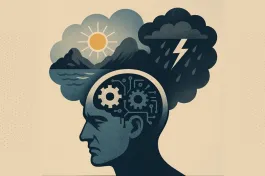The US has been on the boil after George Floyd, an African American, was killed by police officers in Minneapolis on 25 May. With the killing seen as an act of institutional racism that is deeply embedded in the US police and criminal justice system, protests erupted across the US and beyond. Unlike in the past, the protests have attracted not just African Americans but large sections of White youth and other minorities too. While some compare the scale of the agitations to Los Angeles’ race riots of 1992, others compare it to the civil rights protests of the 1960s.
The protests mark a rare moment of unity. They have managed to shake the conscience of people cutting across race and ethnicity. The unifying theme of Black Lives Matter echoes widely. If the self-immolation of a young street vendor in Tunisia in 2010 triggered protests that snowballed to become the Arab Spring, the killing of George Floyd has triggered a Black Spring.
The protests are an outcome of accumulated anger that was simmering and waiting to boil over, particularly after Donald Trump assumed the presidency in 2016. There are three broad reasons behind the latest protests. One, Black communities are the worst hit in the Covid-19 pandemic. The rate of death among African Americans has been more than double that of other communities. Of the total Covid-19 deaths in the US, nearly a quarter are African Americans, which is much higher than their population share of 13%. These disproportionate death rates are an outcome of not only poor public health responses and the racial divide in the healthcare system, but also an accumulated health crisis.
Trump’s entry into the White House came at a time of symbolic gains for African Americans, including the presidency of Barack Obama, alongside massive structural disparities.
Two, White nationalists have been emboldened by Donald Trump’s presidency and have become increasingly aggressive. Trump’s repeated use of abusive language against minorities assuages the insecurities of the White majority. Trump’s entry into the White House came at a time of symbolic gains for African Americans, including the presidency of Barack Obama, alongside massive structural disparities. These gains brought about ‘White backlash’ or ‘White rage’, similar to the upper caste revolt in the wake of Narendra Modi coming to power in India. Trump’s election campaign was a carefully worked out strategy to attract the White working class who felt left out by globalisation because they did not see improvements in their living conditions. Trump has used these symbolic gains to mobilize the White working class that has been suffering economic hardships from stagnant minimum wages for the last 30 years.
Three, the most fundamental of all, is the deepening structural inequality amongst different races and ethnicities in America. A contrast with India is useful. 1 Caste is not strictly comparable to race as its history and hierarchical structure fundamentally differ from the latter. So does its source of inequality. For instance, the main source of wealth inequality in contemporary US is homeownership, while in India it is land which accounts for about 60% of inequality. Similarly, while it is true that inter-caste disparities in education, income and jobs have been narrowing, the intra-caste or sub-caste inequality have become a significant source of concern in India. Existing studies point to a trend that the relative position of African Americans vis-à-vis Whites in certain indicators is worse off than of the lower castes vis-à-vis upper castes in India. The gap between African Americans and Whites has been narrowing slower than that between India’s lower castes and upper castes. Thomas Piketty demonstrates that between 1950 and 2014, the ratio of average income between African Americans and Whites increased to just 56% from 54%. In India during the same period, the ratio of Scheduled Castes and Tribes income to that of the rest of the population rose to 74% from 57%. This article analyses these structural inequalities in the United States, using India as a contrasting example.
Original Sin: A Dark Past
The French adage, ‘the more things change, the more they stay the same’, is apt to describe the history of race relations in the US. While the Thirteenth Amendment to the US constitution abolished slavery, the Fourteenth Amendment conferred citizenship on African Americans. The Civil Rights Act of 1964 ended segregation. Yet socio-economic disparities continue to persist.
Black scholars like Bonilla (2014) argue that the difference between the era of slavery, of Jim Crow, and the post-civil right era is often thin. While not overlooking the importance of each regime in understanding the history of racial disparities, the underlying structural factors continue to be active across these regimes. Legislation ended formal inequality, but structural inequalities persist. A regime of colour blindness emerged and with it thrived forms of exclusion in everyday life.
The post-civil war era could be considered as the era of mass incarceration, recreating Jim Crow. The United States, with just 5% of world population has a fifth of the world’s prisoners; a third of whom are African American. Their numbers are five times that of imprisoned Whites. Michelle Alexander (2010) argues that these prisoners are deprived of basic civil rights and by denying voting rights to them, the central outcome of the decades-long civil rights movement was defeated.
Nicole Gonzalez Van Cleve (2016) has documented how judges, prosecutors and defence attorneys collude in institutionalizing racism in the US criminal justice system. Similarly, police brutality against African Americans is as old as slavery since its origin lies in slave patrolling in the US south. African Americans more than other ethnic communities are likely to get killed by the police. In 2018, for instance, 229 out of 992 people killed by the police were African Americans: almost a quarter.
Class difference within Whites matters in understanding racial relations. Affluent Whites are often undisturbed by upward mobility amongst African Americans, which is not the case with poorer Whites, who see this as competition.
Similar to Indian upper-caste elites believing in caste neutrality, the United States too has a history of race blindness. In both cases, privilege is defined as normality, and as an entitlement, often a hard-earned one. Eduardo Bonilla-Silva (2014) suggests that racial disparities are produced by covert White privilege rather than through overt White supremacy. Class difference within Whites matters in understanding racial relations. Like caste in India, race does not act alone. It works along with class. Many disparities are produced by inherited privileges, which operate through impersonal and institutional levels. Affluent Whites are often undisturbed by upward mobility amongst African Americans, which is not the case with poorer Whites who see this as competition. White liberals who claim to be race neutral and are driven by White guilt — as against White supremacists and ‘White trash’ — overlook these structural factors that reproduce racial disparities. Like caste, such White privilege operated under the veil of neutrality till Donald Trump’s presidency exposed more clearly deep-rooted racism.
The Discourse of Reparation
Historical exclusion and persistent discrimination have only built cumulative disadvantages for African Americans. They own just 3% of national wealth against their population of 13%. A recent study by the Institute for Policy Studies and the Corporation for Economic Development shows that in the last 30 years the average wealth of a White household increased by 84%, which was three times the growth rate for African Americans.
This alarming wealth inequality is a product of 400 years of slavery, segregation, and institutionalized discrimination. Three factors explain such a deep racial divide in wealth. First, the barriers to land ownership, including the denial of land promised to freed slaves. William Darity and Kirsten Mullen (2020) conservatively estimate the current worth of those promised lands to be $1.5 to $2 trillion. Second, African Americans were excluded from President Franklin Roosevelt's New Deal and the G.I. Bill of Rights for Word War II veterans, initiatives that created the contemporary White middle class.
[The] loans which created massive homeownership among Whites were available to only 2% of African Americans [...] Home ownership remains to be a significant source of inequality.
Third, redlining and the subprime mortgage collapse disproportionately affected African Americans. Redlining, the practice of discrimination in providing housing loans or of differential prices, led to higher costs for Black home ownership. Redlining was banned only in 1968. As a result, between 1934 and 1968, the loans which created massive homeownership among Whites were available to only 2% of African Americans (Katznelson 2004, 90). Home ownership remains a significant source of inequality. On an average, only 5% of Black children are likely to grow up in a poverty-free neighbourhood as compared with 63% of White children (Chetty et al 2020).
If redlining denied loans to African Americans, the predatory subprime mortgage industry gave them bad loans in the 1990s and the early 2000s. The 2007 subprime crisis disproportionately affected African Americans and reversed the gains made in wealth creation. The average Black household lost three times more wealth than the average White household during 2007–2010.
[Intergenerational] mobility among African Americans is lower than Whites, even after controlling for wealth and income. They also are likely to face faster rates of downward mobility than Whites under any economic shocks.
In the face of rising wealth inequality, the promise of upward mobility through education too has evaporated. School segregation and poor infrastructure are the cause of this reduced mobility. Black dominated schools are more likely to be starved of funds as compared with White dominated ones. African Americans who have a college degree have just two- thirds of the wealth of Whites who have not even finished high school. Raj Chetty et al (2020) show that intergenerational mobility among African Americans is lower than Whites, even after controlling for wealth and income. They also are likely to face faster rates of downward mobility than Whites under any economic shocks.
The wage difference between African Americans and Whites has been growing. The wage gap increased to 27% in 2015 from 18% in 1979. This is partly to do with occupation in predominantly low paying jobs. Only 3% of African Americans are in executive jobs, predominantly in public and private non-profit sectors. Besides wage discrimination for identical jobs, there is racial discrimination in hiring practices, something similar to what one experiences in India.
For instance, a study showed that applications with White names had a 50% greater chance to be called for an interview as compared with applications with African American names. This is similar to results in India, where studies have shown that applications with Brahmin names receive more calls for job interviews compared with applications bearing Dalit names.
If we compare the trend in the US with that in India, despite continuing caste segregation, reservation policies have narrowed the educational gap faster unlike the gap between Blacks and White in the US. As Sam Asher et al. point out, Dalits and other lower castes tend to have better intergenerational educational mobility than other groups (except for Muslims) in India. Reservations in education and jobs introduced since the colonial regime have generated a tiny but politically assertive middle class among Dalits and have built a vibrant Dalit civil society. Lower castes have increased their participation in higher education. The renewed significance of caste in universities — largely due to the assertions of lower castes in higher education institutions in the last decade — affirms this rise.
The Tryst with Affirmative Action
The introduction of affirmative action for African Americans in the 1960s by President Lyndon Johnson was described as “a shining moment in the conscience of man” by Martin Luther King Jr. It created a Black middle class, just as its Indian version created a Dalit middle class. There are, however, fundamental differences between affirmative action in the US and the reservation system in India. Affirmative action works on the basis of executive orders, is largely voluntary and incentivized, while India’s reservation policy is constitutionally guaranteed and is quota based.
Affirmative action has been as vulnerable to judicial contestation over interpretation and implementation as reservation quotas have been in India. It is not constitutionally guaranteed and has no predetermined quotas. The judicial system in the US generally has not been fair to affirmative action. Even in a rare instance in 2003 of endorsing the right of universities to consider race in admission, the US supreme court accused the current method of increasing minority representation as being “too mechanistic and formulaic to pass muster” (Weisskopf 2004, 10).
More recently, Trump has attempted to put a hold on affirmative action. This is akin to the introduction of the 2019 Economically Weaker Section quota in India that fundamentally changes the foundation for reservation in India by delegitimizing caste criteria for backwardness. One constitutes colour blindness, the other symbolizes caste blindness.
US private businesses and universities [...] promote and market racial diversity, showcasing it as an achievement. India has a dismal record on this front [... The] privatization drives in India since 1991 [...] could reverse the gains made by Dalits and lower castes through reservation so far.
Affirmative action is applied in the private sector, albeit to a limited extent. Similarly, under affirmative action, preferential treatment in government procurements and contracts are given to Black entrepreneurs. A diversity component is linked to government contracts and grants. Firms which fail to do so face the risk of being barred from competition for future US federal government contracts. This model is what inspired the formation of the Dalit Indian Chamber of Commerce and Industry.
US private businesses and universities, including the Ivy Leagues, promote and market racial diversity, showcasing it as an achievement. India has a dismal record on this front. Indian business houses enjoy a range of governmental support, but are hardly committed to affirmative action, despite claims of voluntary initiatives. A 2019 commerce ministry report found hardly any credible evidence of inclusion amongst Indian corporates. This implies that the privatization drives in India since 1991 and fewer jobs in the public sector could reverse the gains made so far through reservation by Dalits and lower castes.
Nixon Meets Trump
The rise of Barack Obama to the presidency in 2008 offered a sense of confidence to African Americans. While some Black intellectuals accuse Obama for not doing enough, evidence suggests that there was indeed a symbolic gain. For instance, a police chief in Minneapolis who attended several Trump rallies claimed that Obama restraining police excessiveness was “oppression of police,” and he praised Trump for “letting cops put the handcuffs on criminals instead of us.”
Many see the protests as a moment of reconciling with the ‘truth’ and the arrival of a new America. However, such optimism has to be taken with caution. The processes at stake here are to do with deep-rooted structural inequalities and institutionalized racism.
But even under Obama, structural and institutionalized racism in the guise of colour blindness was very much intact. Obama’s optimism of creating a new normal “where bigotry no longer infects our institutions and our hearts” failed on the face of this institutionalized racism. It is in this context that one has to look at the current protests. Many see the protests as a moment of reconciling with the ‘truth’ and the arrival of a new America. However, such optimism has to be taken with caution. The processes at stake here have to do with deep-rooted structural inequalities and institutionalized racism, which are fundamental features of American social and political organization. Addressing the former requires immense resources and the latter demands well-thought-out institutional reform. Slogans of love or sympathy, how much ever solace they may bring, will not be sufficient to deal with such a monumental task confronting the United States.
The Arab Spring, for instance, gave birth to conservative regimes in the region. The civil rights movement in the 1960s facilitated the rise of the conservative President Richard Nixon. The Nixon election campaign in 1968 was built on two enemies: anti-war Leftists and African Americans. Terms like ‘crime’ and’ law and order’ helped criminalize African Americans on the pretext of a war on drugs and worked in Nixon’s favour during his campaigns among White voters. Trump too could gain from this cultural war. The injured pride of the ‘silent majority’ — a rather infamous Nixon era term to refer to the hurt Whites — may keep Trump in office. This is precisely why polarization helps him. Trump’s posturing as a strongman and his claim of ensuring order and stability may exploit the White backlash for political consolidation.










